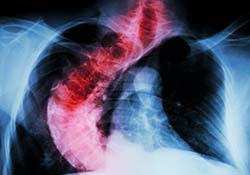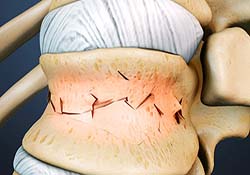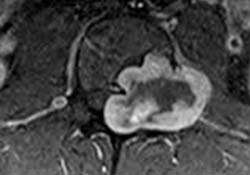Back pain is one of the most common symptoms in human life. It is a spectrum, a multifactorial condition. Back pain can be originated from functional causes (such as muscle spasms) to very severe diseases (such as a spinal tumor). Therefore, the proper diagnosis and the management of a patient with back pain is crucial. Most of the back pain conditions do not require a surgical intervention, but there are several cases when surgical treatment can provide pain relief, complete healing and functional improvement. The key element of the successful treatment is the detailed diagnostic process and the perfect application of the appropriate surgical method. The decision making process is often personalized requiring evidence based, modern decision supporting tools.

Disc herniation
Disc herniation is a common problem where the indication and the timing of the surgical intervention is crucial.

Spinal stenosis
In case of a disabling spinal stenosis, pain relief and functional restoration can be achieved with surgery.

Segmental instabilty
Segmental instability can result in loss of quality of life and working ability when surgical stabilization is indicated.

Deformity
Progrediating spinal deformity is a painful condition where only the surgical correction can cure the patient.

Vertebral fracture
Most of the traumatic or compression fractures can be treated with minimal invasive methods providing pain relief.

Spine tumor
In patients suffered from a spine tumor, quality of life influenced by pain is in the focus of the treatment process.
